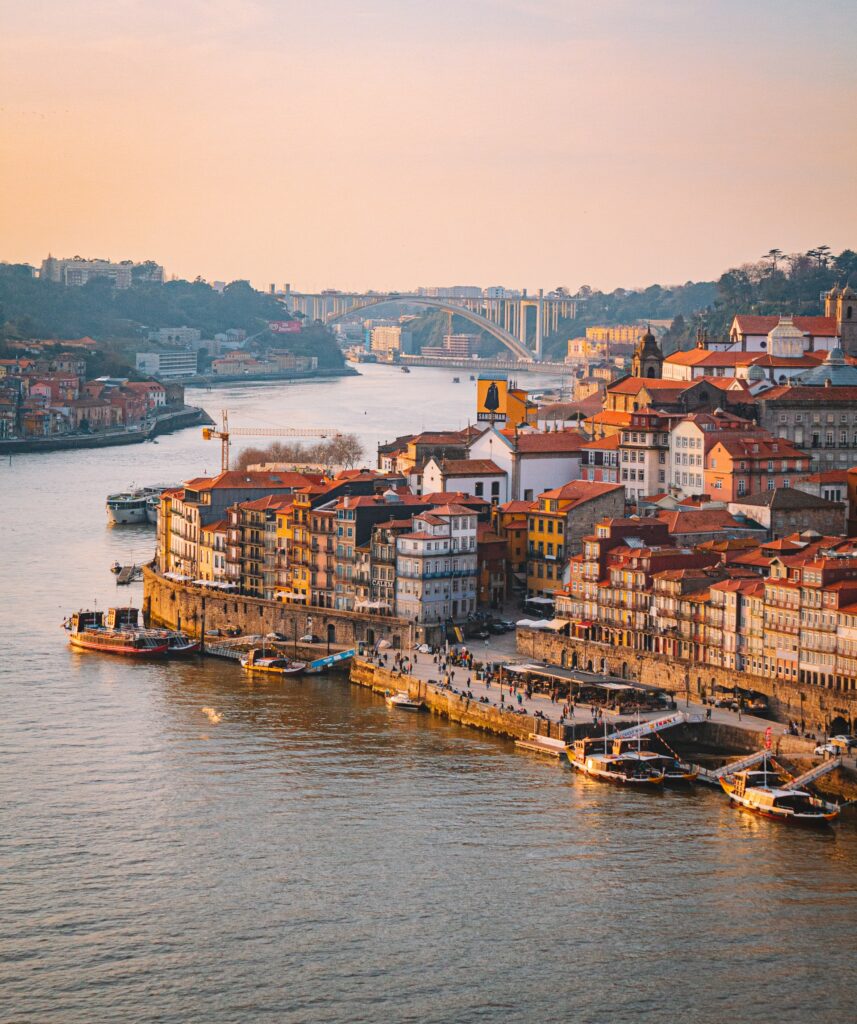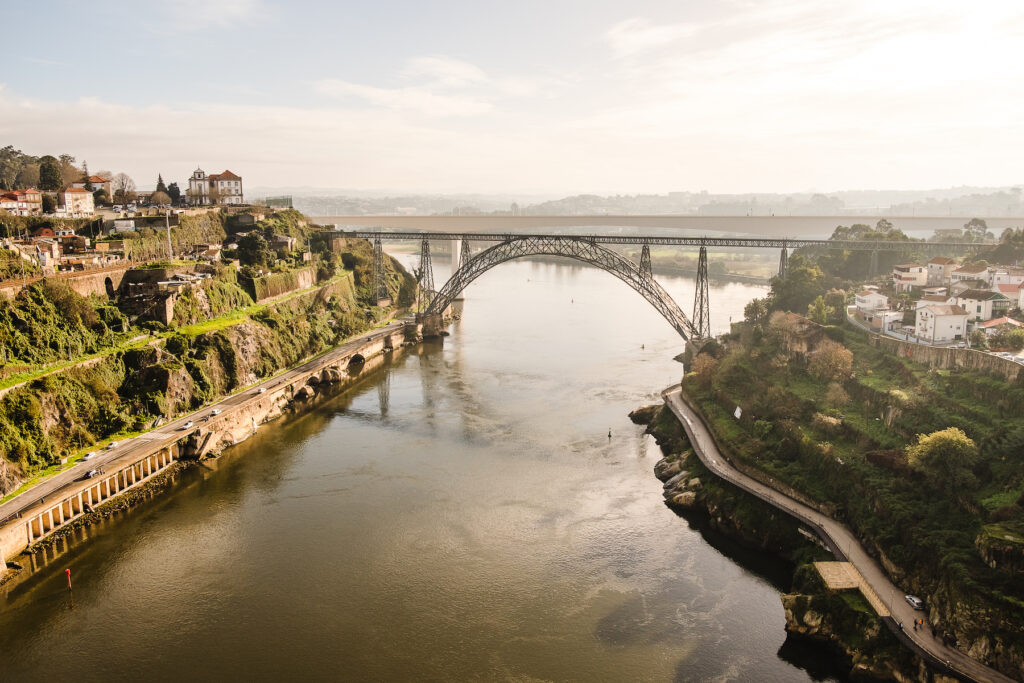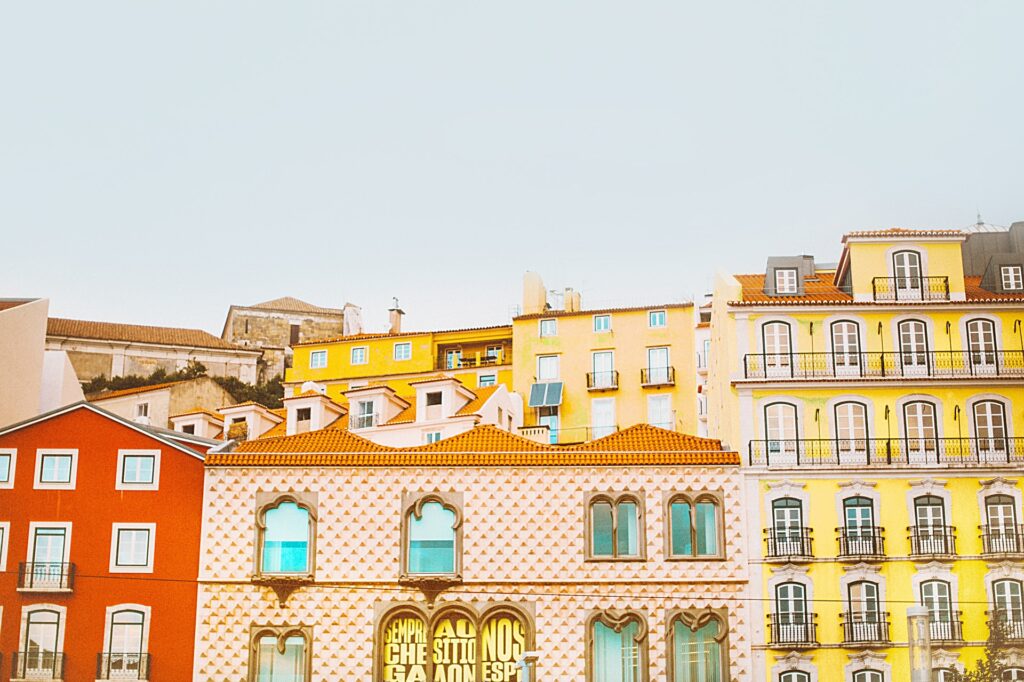Porto is a port city in Portugal, located on the river Douro and is home to some of the country’s most iconic landmarks. Its neighborhoods are as diverse as the people who live here, with each area offering something different for visitors and residents alike.
In any case, Porto is not that big, so depending on the area you choose to stay in, you can visit everything on foot. And, since there are many options, finding a place to stay is not as hard as you might think.
In this post, we will give you an overview of what Porto offers in each area so you can make an informed decision about where to spend your time while visiting!
About Porto
Porto is located in the Northern region of Portugal, in a small bay along the Douro River. It’s Portugal’s second-largest city and port, after Lisbon. The locals are called ‘os portuenses.’
The city is regarded as one of Europe’s most vibrant cities with an enviable quality of life in terms of public safety and infrastructure – it currently ranks 100th on Numbeo’s quality of life ranking and number one in quality of life in Portugal, according to the research.
Porto has around two hundred thousand residents, including immigrants from other European and African countries and the Americas. Its population consists mainly of people within the age group of fifty years old or more (49,7%), while only 23,7% of its inhabitants are in the age group of 30 to 50 years old.
The town is home to the University of Porto (the most prominent Portuguese university) and many small business startups employing thousands in recent years because it’s seen as more affordable than Lisbon.
A Brief Dive into History
The Romans founded the city as Portus Cale around 136 BC. It became Portugal’s second-most important town after Lisbon and one of Europe’s foremost centers for trade, exporting goods to England, Germany, Belgium, and other countries worldwide.
Porto was also a historically important port of destination for immigrants who came to Portugal from Europe, Africa, and Brazil.
During the 17th century, English families started moving to Porto. They settled here, and by the 1820s, there were over 100 English-owned cellars in Porto – primarily located in Vila Nova de Gaia, just across the river. Ever since, Porto has been home to several high-quality wines such as Taylor’s, Sandeman, Churchil’s, Graham’s, and others.
These days port wine production is one of many industries that characterize this municipality with its distinctive architecture and culture.
The Best Neighborhoods in Porto

Porto is not necessarily a large town, and most tourist attractions are located within walking distance. Therefore, the area you choose to stay in the city during your holidays depends on what you’re looking for.
If you’re looking for convenience, you might want to stay around downtown; on the other hand, if you rent a car or don’t mind taking public transportation or Uber, you can stay in a more laid back area like Foz do Douro or a less cramped environment like Boavista.
So, if you’re not sure about what area of the city you want to stay in, here are some things to consider about each district.
Baixa (Downtown) – the best place to be right in the middle of everything
This is the most popular neighborhood among tourists and the heart of Porto. It’s the city center, and it has a rich history, so you’re bound to find something that interests you. The Baixa is one of Porto’s oldest districts, with buildings dating back to the 14th century!
Baixa offers visitors an excellent mix of traditional Portuguese architecture and attractions like museums, theaters, fado houses, concert venues, clubs, restaurants, coffee shops, and historical buildings. And since most of the popular sightseeing spots are there, you have almost everything within walking distance.
From there, you can easily visit Avenida dos Aliados, Rua das Flores, Santa Catarina shopping street, as well as Porto’s famous churches and buildings like Palácio da Bolsa. Plus, the bustling night of Ribeira is just a cable car ride away from you.
Apart from that, there are many shops, restaurants, and pubs to enjoy the culture of Porto. It’s also easy to take public transportation since it has subway stations around and many bus lines that connect Baixa with other districts.
The only downside is that finding a place to stay downtown might be a bit more pricey than in other districts. So, if you’re on a budget, the best solution might be to stay at Vila Nova de Gaia, the municipality across the river from Porto or some of the surrounding neighborhoods.
Pros: easy to visit the most popular sightseeing spots, great food and drinks, and quite safe for the center of a port city.
Cons: Prices are higher than in other districts, so this might be too expensive if you’re on a budget.
Vila Nova de Gaia – a more affordable option close to the center
Even though Vila Nova de Gaia is not technically on Porto (it’s the town across the river where most of the wineries are located), this is one of the most charming port wine-producing places in northern Portugal and one of the best places to stay when visiting the area.
If you choose to stay at a hotel or Airbnb near the Ponte Luis I (Luis I Bridge), for instance, you can quickly get to Porto downtown on foot – the bridge seems enormous in the pictures, but it’s actually only 385 meters long.
Moreover, Vila Nova de Gaia offers visitors an opportunity to indulge in some shopping experience at exclusive boutiques that sell everything from clothes to ceramics and visit some of the biggest names in the port wine industry.
Gaia also offers affordable prices for accommodation and amazing views from the sunset over Porto.
Pros: proximity to Porto (about 10-15 minute walk depending on where you stay) and more affordable accommodation and shops. Shopping in Vila Nova de Gaia is cheaper than downtown Porto, with many big brands and high-quality clothes at affordable prices.
Cons: the lack of good restaurants and the fact that depending on where you stay, it might not be close enough to Porto, making it hard for you to visit it easily.
Ribeira – the best district for a bustling nightlife
Ribeira is one of the busiest, most vibrant, and liveliest districts in Porto.
It’s an excellent choice for tourists who want to see how locals enjoy themselves during nighttime – there are bars, restaurants, nightclubs, and other entertainment options.
During the day, it’s perfect for a stroll along the river, sit in a restaurant and drink a glass of wine or Porto Tonic (a famous local drink), or watch boats and people go by. You can even go on a boat ride yourself, as there are many options for you to see Porto straight from the Douro River.
Pros: great nightlife, liveliness, and vibe; port wine tasting is easy to find in Ribeira’s restaurants or shops.
Cons: it gets crowded during the day with tourists who have come for a stroll, and it might be noisy during the night. It’s also pretty steep to get to the downtown, so if you’re not fit, it might be a hustle getting around – especially if you’re carrying some luggage.
Boavista – the best neighborhood for shopping and modern housing
Boavista is a nice neighborhood and has some great nightlife and restaurants. In recent years it’s undergone major urban renewal for residential housing, so you’ll find modern buildings and houses there.
This district seems much more spacious than the other areas since the streets and avenues (such as Avenida Boavista) are broad, the buildings are separated from each other, and the streets have wide sidewalks and trees.
However, you’ll need a car to get around or else be prepared for long bus or subway rides, since most of the historical buildings and other tourist attractions are far.
On the other hand, Boavista is close to Jardins do Palácio de Cristal (Crystal Palace Gardens), which has some of the most breathtaking views in Porto.
Pros: Lots of green spaces and parks; wide sidewalks and ample avenues, close to some tourist attractions, such as Jardins do Palácio de Cristal.
Cons: Far from most attractions in Porto (such as Ribeira and the city center). Parking can be expensive here if you rent a car.
Foz do Douro – the best area for a laid-back and less busy stay
Foz do Douro is a more upscale district, but it’s relatively far from the center (Baixa). It is, however, close to the Atlantic Ocean, and it’s an excellent neighborhood for liveliness and a healthy lifestyle. You’ll see people biking or running on the promenade, or even surfing or practicing kite-surfing at the beach.
This is also where some of the wealthiest people in Porto live and where some great hotels are located. There are also a few good restaurants and bars if you want to enjoy the nightlife – but not as many as there are in the city center.
Even though the district is far from the downtown, you’re still close to Parque da Cidade do Porto – the biggest urban park in Portugal – and Parque de Serralves, a park that hosts a museum with great exhibitions many world-renowned artists.
The downside to this location is that it might be a little too far for those who don’t have a car or are not used to commuting, as the bus ride can take up about an hour. You can also opt for taking the metro, but you’ll always need to take the bus until Boavista.
Pros: Foz do the Douro offers a more laid-back lifestyle, and the beaches nearby are beautiful. You’ll love to go for a stroll by the beach.
Cons: it’s expensive, so you need to have quite a bit of money if you want to stay here. Plus, it’s a bit out of the way from the center, it gets really crowded on the weekends and during summer, and it might be noisy during the night.
Other Convenient Neighborhoods: Cedofeita, Santo Ildefonso, Sé and Bonfim
Porto’s districts are pretty small in area, so if you want to be close to almost everything but don’t want to stay at Baixa, you can choose between Cedofeita, Santo Ildefonso, Sé, and Bonfim.
These are all extremely close to Baixa and still near the riverside. They are also a good alternative for people who want something more laid back.
From there, you can quickly get to the best restaurants in Porto, as well as to Rua de Santa Catarina, the port wine cellars, and every other sightseeing spot you want to visit.
There are also many bars and cafés in the area so that you won’t be bored at any time there.
The downside is that they can get quite noisy because of all the traffic and tourists. It’s also worth mentioning that sometimes there’s not enough parking space available on weekends or holidays if you rent a car.


